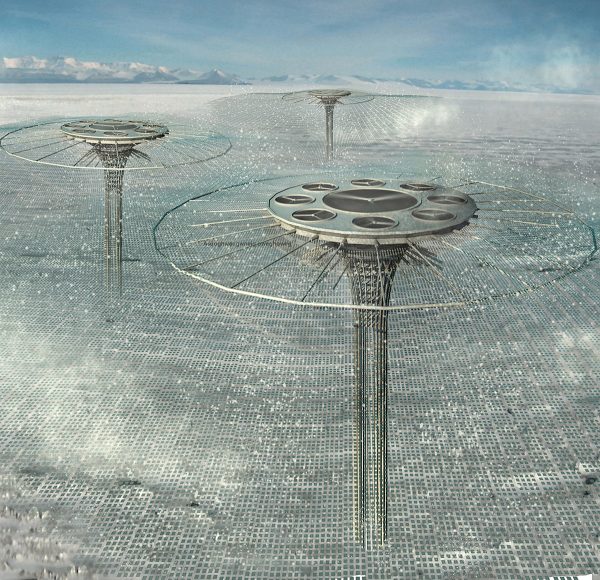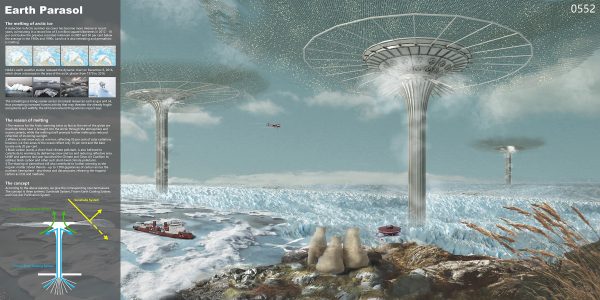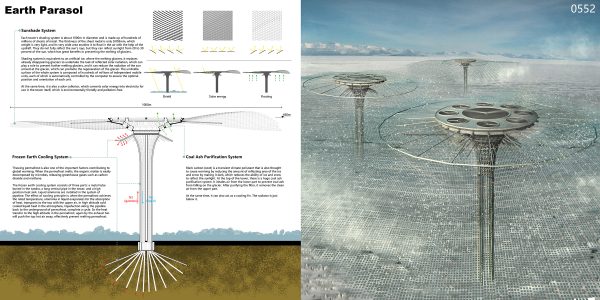Editors’ Choice
2018 Skyscraper Competition
Haotong Sun, Zonghao Wu, Fengwei Jia
China
The melting of arctic ice
A reduction in Arctic summer ice cover has become more intense in recent years, culminating in a record low of 3.4 million square kilometres in 2012 – 18 per cent below the previous recorded minimum in 2007 and 50 per cent below the average in the 1980s and 1990s. Land ice is also retreating and permafrost is melting.
The retreating ice brings easier access to natural resources such as gas and oil, thus prompting increased human activity that may threaten the already fragile ecosystems and wildlife, the UN Environment Programme’s report says.
The reason of melting
1.The reasons for the Arctic warming twice as fast as the rest of the globe are manifold. More heat is brought into the Arctic through the atmosphere and ocean currents, while the melting itself prompts further melting by reduced reflection of incoming sunlight.
2.White ice and snow acts as a mirror, reflecting 85 per cent of solar radiation; however, ice-free areas of the ocean reflect only 10 per cent and the bare tundra only 20 per cent.
3.Black carbon (soot), a short-lived climate pollutant, is also believed to contribute to warming by darkening snow and ice and reducing reflective area. UNEP and partners last year launched the Climate and Clean Air Coalition to address black carbon and other such short-lived climate pollutants.
4.The thawing of permafrost will also contribute to further warming as the organic matter stored therein – up to 1,700 gigatonnes of carbon across the northern hemisphere – also thaws and decomposes, releasing the trapped carbon as CO2 and methane.
The concept
According to the above reasons, we give the corresponding countermeasure. The concept is three systems: Sunshade System, Frozen Earth Cooling System, and Coal Ash Purification System.
1.Sunshade System
Each tower’s shading system is about 1000m in diameter and is made up of hundreds of millions of sheets of metal. The thickness of the sheet metal is only 0.003mm, which weight is very light, and its very wide area enables it to float in the air with the help of the updraft. They do not fully reflect the sun’s rays, but they can reflect sunlight from 20 to 30 percent of the sun, which has great benefits in preventing the melting of glaciers.
Shading system is equivalent to an artificial ice, where the melting glaciers, it replaces already disappearing glaciers to undertake the task of reflected solar radiation, which can play a role to prevent further melting glaciers, and it can reduce the radiation of the sun arrived at the glacier, which can promote the regeneration of the glacier. The umbrella surface of the whole system is composed of hundreds of millions of independent mobile units, each of which is automatically controlled by the computer to ensure the optimal position and orientation of each unit.
At the same time, it is also a solar collector, which converts solar energy into electricity for use in the tower itself, which is environmentally friendly and pollution-free.
2. Frozen Earth Cooling System
Thawing permafrost is also one of the important factors contributing to global warming. When the permafrost melts, the organic matter is easily decomposed by microbes, releasing greenhouse gases such as carbon dioxide and methane.
The frozen earth cooling system consists of three parts: a metal tube buried in the tundra, a long vertical pipe in the tower, and a high position heat sink. Liquid ammonia are installed in the system of pipeline. The effect of cooling principle is: when the permafrost achieves the rated temperature, ammonia in liquid evaporates for the absorption of heat, transports to the top with the upper air, in high altitude cold cooled liquid heat in the atmosphere, liquefaction along the pipeline back to the underground of permafrost, complete a cycle. So the heat transfer to the high altitude in the permafrost, again by the exhaust fan will push the top hot air away, effectively prevent melting permafrost.
3. Coal Ash Purification System
Black carbon (soot) is a transient climate pollutant that is also thought to cause warming by reducing the amount of reflecting area of the ice and snow by making it dark, which reduces the ability of ice and snow to reflect the sunlight. At the top of the tower, there is a huge coal ash purification system. It inhales air from the lower part to prevent coal ash from falling on the glacier. After purifying the filter, it removes the clean air from the upper part.
At the same time, it can also act as a cooling fin. The radiator is just below it.

















